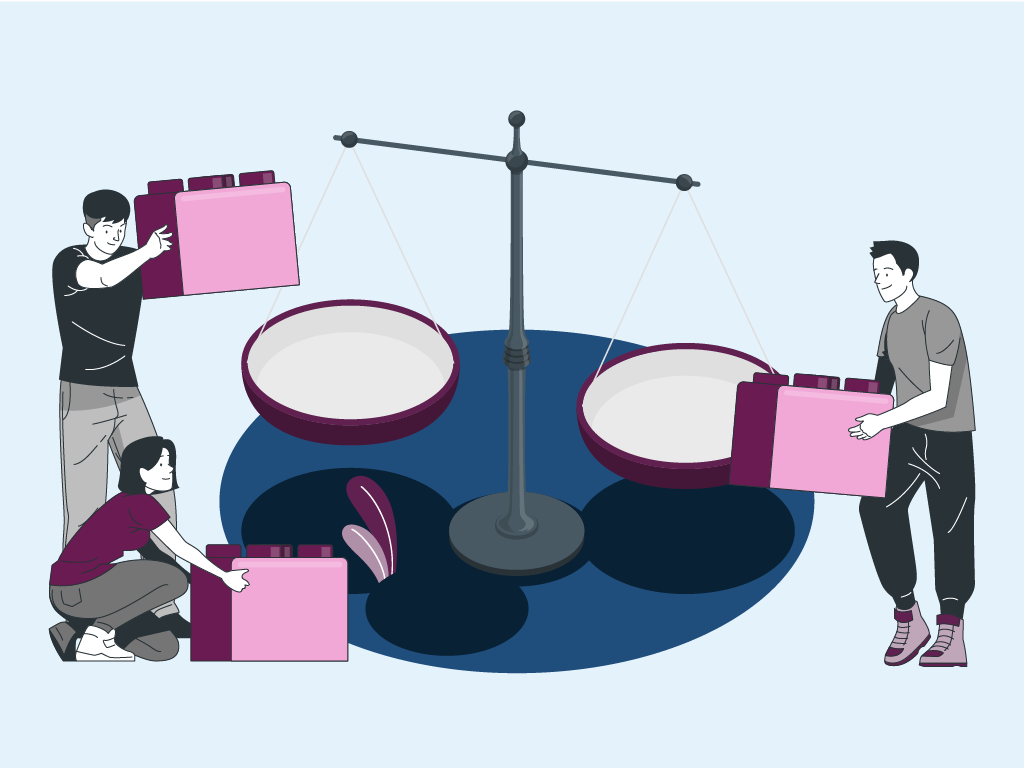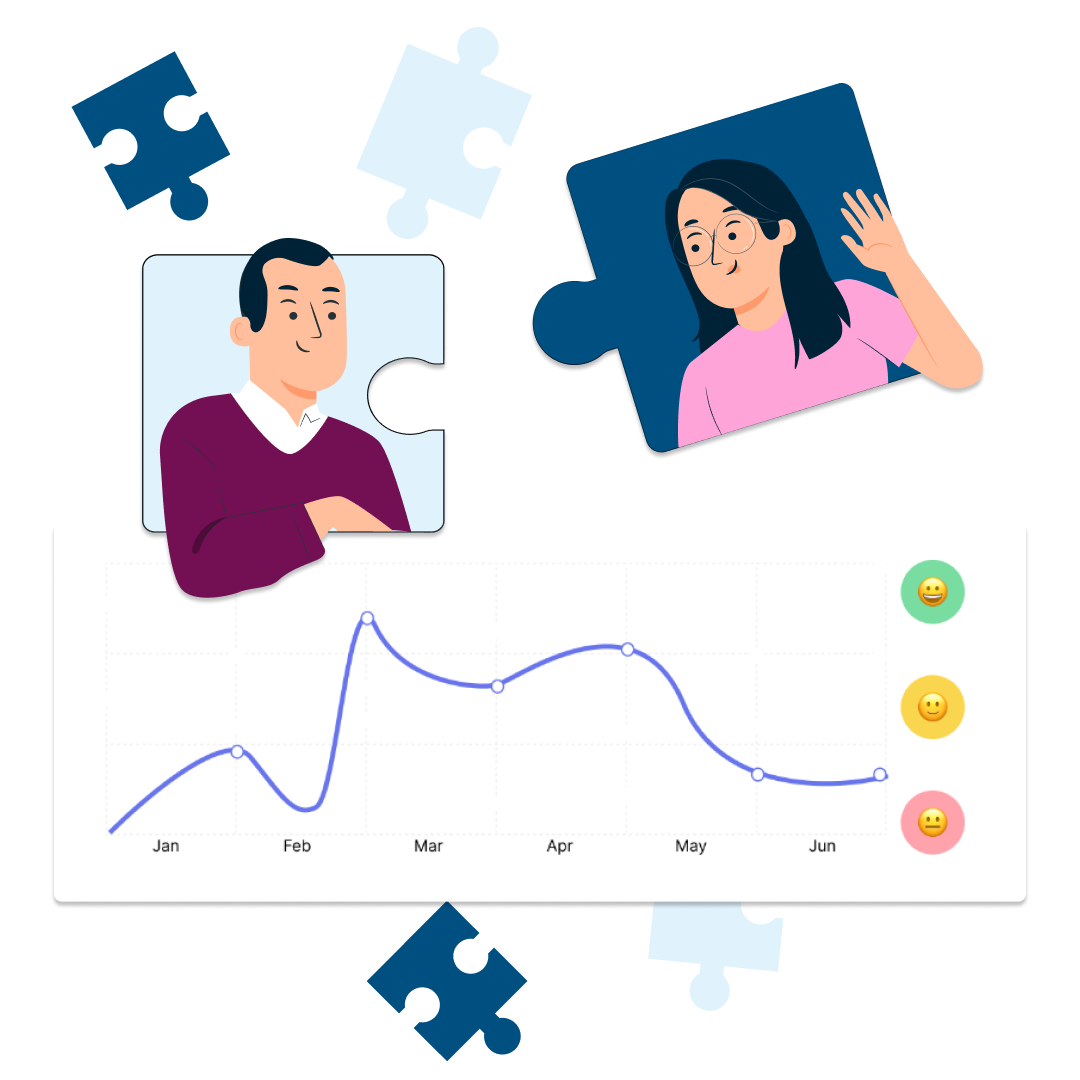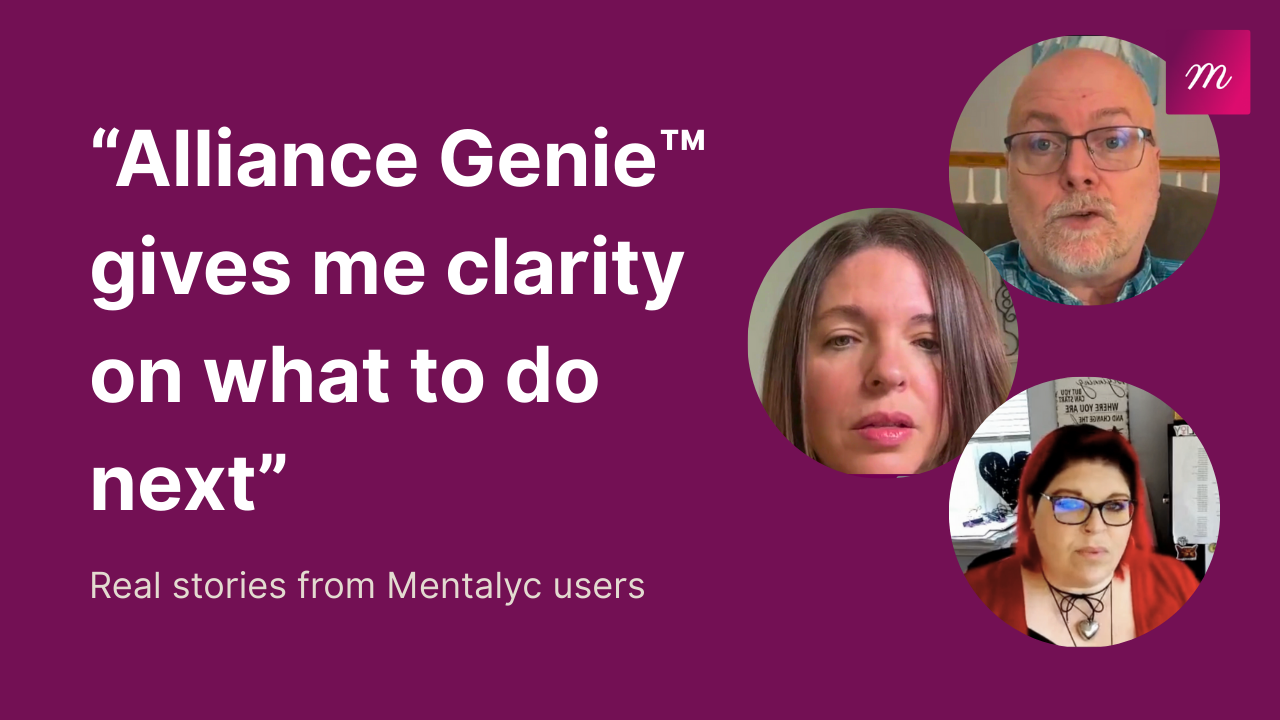The Group Session Rating Scale (GSRS) is an ultra-brief, four-item visual analog scale designed specifically to measure therapeutic alliance in group therapy settings. Unlike traditional alliance measures that focus solely on the client-therapist relationship, the GSRS captures the multidimensional nature of group therapy by assessing both the client’s relationship with the group leader and their connection to the group as a whole.
The GSRS’s main objective is to give therapists instant feedback on each group member’s experience of the therapeutic alliance, session by session. With the help of this real-time feedback, therapists can spot possible problems early, modify their strategy as necessary, and stop therapeutic failures or dropouts before they happen.
The scale covers four important areas that are necessary for group therapy to be successful: relationship quality, goal alignment, approach acceptability, and overall fit. Therapists can make well-informed decisions about treatment modifications and obtain important insights into how each member is experiencing the group process by measuring these dimensions at the end of each session.
Development and Background of the Group Session Rating Scale
Origins within the Partners for Change Outcome Management System (PCOMS)
The Partners for Change Outcome Management System (PCOMS), an thorough approach for tracking therapy results and progress in real time, included the GSRS in its development. With its emphasis on ongoing client feedback and data-driven decision making, PCOMS signifies a paradigm shift in the way therapists approach treatment.
The realization that current alliance measures were insufficient for group therapy settings led to the creation of the GSRS. Although tools such as the Session Rating Scale (SRS) were effective in individual therapy, they were unable to capture the distinct dynamics that exist in group settings. Multiple relationships, shared experiences, and collective processes are all part of group therapy that are just too complex for traditional measures to evaluate.
Key Contributors: Barry Duncan and Scott D. Miller
Two pioneers in the fields of outcome measurement and client feedback systems, Barry Duncan and Scott D. Miller, helped create the GSRS. The Heart and Soul of Change Project’s director, Duncan, is the author of multiple books and articles about the therapeutic alliance and methodical client feedback. His writings highlight the value of patient rights in therapy as well as the therapeutic alliance’s capacity to effect change.
Co-founder of the International Center for Clinical Excellence Scott D. Miller has played a key role in creating useful resources that assist therapists in becoming more effective. What works in therapy and how therapists can use feedback to improve their practice are the main topics of his research.
Components of the Group Session Rating Scale
The GSRS consists of four items, each presented as a visual analog scale with bipolar anchors. Clients respond by marking a point on a 10-centimeter line that best represents their experience of that particular aspect of the group session.
The four components are:
- Relationship: This item assesses whether the client felt understood, respected, and accepted by both the leader and the group. The scale ranges from “I felt understood, respected, and accepted by the leader and the group” to “I did not feel understood, respected, and/or accepted by the leader and/or the group.” This component captures the fundamental relational aspect of therapy, which is essential for therapeutic change.
- Goals and Topics: This dimension evaluates whether the group worked on what the client wanted to address. It goes from “We worked on and talked about what I wanted to work on and talk about” to “We did not work on or talk about what I wanted to work on and/or talk about.” This ensures that the group remains relevant and meaningful to each individual member.
- Approach: This item measures how well the leader’s and group’s approach fits with the client’s preferences and needs. It ranges from “The leader and group’s approach is a good fit for me” to “The leader and/or group’s approach is not a good fit for me.” This component helps identify when therapeutic approaches may need adjustment for particular clients.
- Overall Fit: The final item assesses the client’s overall sense of belonging and connection to the group. The scale extends from “Overall, today’s group was right for me – I felt like a part of the group” to “There was something missing in group today – I did not feel like a part of the group.” This global measure captures the client’s overall experience of group membership and engagement.
Administering the Group Session Rating Scale in Clinical Practice
Best Practices for Introducing the GSRS to Clients
Group members must be properly introduced before the GSRS can be implemented successfully. During the first session, therapists should explain the measure’s goal, stressing that it is intended to enhance everyone’s group experience and that it is strictly confidential. The GSRS should not be framed as an assessment or test, but rather as a collaborative tool.
A therapist might say, for instance: “I’ll ask you to fill out a quick form at the end of each session so I can better understand how the group is working for you. There are no right or wrong answers; this is not a test, it’s a way for you to give me feedback about your experience so I can make sure the group is as helpful as possible for everyone.”
Frequency and Timing of Administration
Every group session should finish with the administration of the GSRS in order to record each participant’s immediate experience, just before clients leave but after the therapeutic work is over. This gives them the opportunity to think back on the entire session experience while it is still vivid in their memory. Alliance ratings can fluctuate from session to session, making routine monitoring essential for identifying potential issues early. Since completing the assessment takes only a few minutes, it can be administered regularly without disrupting the therapeutic process.
Utilizing Paper and Digital Formats
Depending on the clinical context and the resources available, the GSRS can be given in both paper and digital formats. Paper versions are accessible in all contexts due to their simplicity and lack of technological requirements. Digital versions can help busy practitioners save time by streamlining data management and scoring.
Scoring and Interpreting the Group Session Rating Scale
Scoring Methodology
The GSRS is easy to score, with scores ranging from 0 to 10 centimeters in the visual scale. All four items are added together to determine the final score, which can range from 0 to 40 points.
Understanding Cut-off Scores and Their Implications
Although research on precise GSRS cut-off scores is ongoing, clinical experience indicates that scores below 36 may point to possible alliance issues that need to be addressed. Instead of depending only on absolute scores, therapists should take into account the unique patterns of each client.
Addressing Low Scores and Client Feedback
Low GSRS scores from a client offer a chance for therapeutic discussion and course correction. Therapists can frame low scores as helpful feedback that enhances the group experience rather than seeing them as problematic.
For example, if a client has a low score on the “goals and topics” dimension, the therapist may follow up with them one-on-one or in a group setting to discuss what subjects would be more beneficial or pertinent to them. This cooperative strategy shows that client input is respected and taken into consideration.
Psychometric Properties of the Group Session Rating Scale
Reliability and Validity
The GSRS has good psychometric qualities, according to research. Cronbach’s alpha coefficients for the measure range from 0.86 to 0.90 across sessions, indicating excellent internal consistency. This suggests that the four items measure a single construct in a coherent manner.
For a process measure that is supposed to capture session-to-session variability in the therapeutic alliance, test-retest reliability coefficients between 0.42 and 0.62 are suitable. This degree of reliability indicates that the measure is sensitive to shifts in the therapeutic alliance while remaining stable enough to have meaning.
Research Supporting the Use of GSRS
The GSRS has shown concurrent validity by showing strong relationships with validated group therapy measures. It measures similar constructs to the Working Alliance Inventory, a well-known alliance measure, as evidenced by its correlation (correlations ranging from 0.41 to 0.61).
The GSRS’s capacity to capture the complex nature of group therapy relationships is further supported by its significant correlations with measures of group climate and cohesion. The GSRS measures a single, cohesive construct of group alliance, confirmed by factor analysis.
Most significantly, studies show that GSRS scores are predictive of early changes in treatment outcomes. The measure’s clinical utility is supported by the fact that clients with higher alliance scores exhibit greater improvement in psychological distress during the first four sessions of treatment.
Benefits of Implementing the GSRS
Enhancing Therapeutic Alliance in Group Settings
The ability of the GSRS to improve therapeutic alliance through greater awareness and responsiveness to client needs is its main advantage. Therapists can spot and solve possible issues before they become treatment failures or dropouts.
Imagine, for instance, that three of the eight group members routinely receive lower GSRS scores than the other members. This pattern could suggest that these clients’ needs are not being sufficiently met or that they are feeling less a part of the group. With this information, the therapist can investigate group dynamics and possibly modify the process or structure of the group to better accommodate these participants.
Empowering Clients Through Feedback
By allowing clients to participate in the therapeutic process, the GSRS empowers them. Clients take an active role in directing their therapy experience rather than being spectators . Engagement and investment in the therapeutic process may increase as a result of this partnership.
Clients feel a sense of agency and ownership when they observe that their suggestions result in significant group changes, which can be therapeutically advantageous in and of itself. This is especially crucial in group situations where more talkative participants might make some members feel ignored.
Facilitating Outcome-Based Practice
By offering unbiased information about the therapeutic process, regular use of the GSRS promotes outcome-based practice. Therapists can decide on treatment changes based on data rather than just clinical intuition.
They can show accountability to clients, supervisors, and healthcare systems by using this method, which is in line with the principles of evidence-based practice. Additionally, it offers useful information for professional development and clinical supervision.
Challenges and Considerations
Addressing Client Reluctance or Bias
At first, some clients might be hesitant to give candid criticism, especially if they are worried about upsetting the group dynamic or offending the therapist. By stressing that open criticism and other forms of feedback are valued and encouraged, this issue can be addressed directly.
It’s also critical to acknowledge that some clients might be inclined toward positive response bias, which causes them to consistently give everything high ratings regardless of their real experiences. When a client consistently gives very high ratings, therapists should keep an eye out for this pattern and may need to speak with them directly about it.
Time Constraints in Sessions
While the scale itself only takes a few minutes to complete, accessing and setting it up may take some time. However, by preparing the necessary materials in advance and establishing a consistent routine, the process gets streamlined. Both clients and therapists tend to become more efficient with repeated use.
Ensuring Accurate Interpretation of Feedback
Interpreting GSRS feedback requires clinical skill and judgment. Therapists should refrain from over interpreting individual scores or assuming certain scores indicate something without doing more research. Instead of being a final judgment, the measure should be seen as a starting point for discussion.
It’s essential to take into account cultural elements that could affect how clients react to the test. Alliance problems may manifest as more subtly expressed cues in certain cultural contexts where clients may be less inclined to publicly express dissatisfaction.
Integrating GSRS Feedback into Therapy
Responding to Client Scores
When clients provide concerning GSRS scores, therapists have several options for response. In order to delve deeper into the client’s experience, they may follow up with them one-on-one. If necessary, they may also discuss the feedback in a group setting.
Replying in a way that shows you appreciate and take seriously customer feedback is the best strategy. This could entail addressing interpersonal dynamics, making particular adjustments to the group structure, or just recognizing and validating the client’s experience.
Adjusting Therapeutic Approaches Based on Feedback
Feedback from the GSRS can help guide different kinds of modifications to the therapeutic strategy. The therapist may think about changing their therapeutic approach or implementing alternative interventions if several of their clients have low “approach” scores. The group may need to devote more time to treatment planning and goal setting if clients routinely get low scores on “goals and topics.”
Collaborative Goal Setting with Clients
By pointing out areas where clients feel their needs are not being met, the GSRS can help establish more collaborative goals. Therapists can use GSRS feedback to direct discussions about treatment goals and priorities rather than making assumptions about what their clients want from therapy.
While preserving the benefits of group treatment, this cooperative approach guarantees that therapy stays client-centered and sensitive to individual needs.
Frequently Asked Questions (FAQs)
What age group is the GSRS designed for?
The GSRS is designed for use with teenagers over 13 and adults who can read and understand the items.
How does the GSRS differ from the standard SRS?
The primary difference between the GSRS and the Session Rating Scale (SRS) lies in their scope. The SRS focuses exclusively on the client-therapist relationship, while the GSRS captures both the relationship with the therapist and the connection to the group as a whole.
Can the GSRS be used in teletherapy sessions?
Yes, teletherapy sessions can benefit from the use of the GSRS. Clients can complete paper versions at home and verbally report their scores, or digital versions can be distributed via a variety of online platforms. During virtual sessions, some therapists might even show the visual analog scales via screen sharing.
Is the GSRS available in multiple languages?
While the original GSRS was developed in English, translations into other languages are available through the developers and/or research institutions.
When using the GSRS with clients who do not speak English, therapists should make sure that any translations have been adequately validated for use with their target populations.
References
Better Outcomes Now. (n.d.). Download ORS/SRS: ORS and SRS family of measures [Webpage]. Retrieved June 23, 2025.
Davidsen, A. H., Poulsen, S., Waaddegaard, M., Lindschou, J., & Lau, M. (2014). Feedback versus no feedback in improving patient outcome in group psychotherapy for eating disorders (F-EAT): protocol for a randomized clinical trial. Trials, 15, 138.
Duncan, B. L., & Miller, S. D. (2007). The Group Session Rating Scale.
Quirk, K., Miller, S., Duncan, B., & Owen, J. (2013). “Group Session Rating Scale: Preliminary psychometrics in substance abuse group interventions”: Corrigendum. Counselling & Psychotherapy Research, 13(3).
Why other mental health professionals love Mentalyc

“It’s really giving me some good confidence … and areas of improvement to see nuances I didn’t see before.”

“Using Alliance Genie has really improved my notes … It tells me what I’m doing and gives me an approach of what’s next.”

“Reading transcripts helps me tighten up and come across more the way I want to present myself to clients … it’s helped me improve and keep getting better.”
Licensed Marriage and Family Therapist

“It keeps me on a level of assessment about the relationship that has a little bit more objectivity … helps keep me grounded.”







